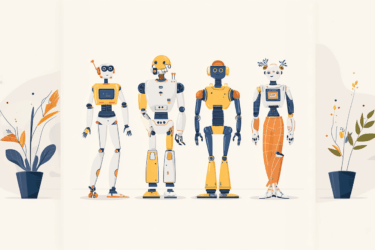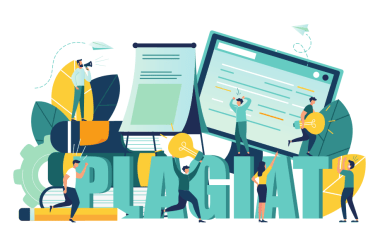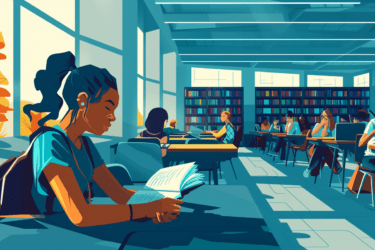How Plagiarism Checkers Are Changing the Writing Process for Students: A New Approach to Research and Citation
Do plagiarism checkers change the way students approach writing? Do they research and cite sources differently, and does their understanding of academic integrity change?
Just as computers replaced typewriters and Internet searches replaced trips to the library, plagiarism checking has changed the writing process, once again by significantly improving it. With every opportunity comes a challenge, and every action has a reaction.
With the rise of different applications and digital writing tools, the need for academic integrity and plagiarism prevention has become a critical component. Plagiarism checkers have made it easier for students to ensure that their work is original and properly cited, ultimately improving the quality of their writing and promoting a culture of academic honesty. As a result, we are entering a new era of writing, where the use of technology to prevent plagiarism is becoming the mandatory norm, and citation styles are being taught as essential skills for successful research and writing.
A New Era of Writing: The Impact of Plagiarism Checkers
Is it true that plagiarism checkers have revolutionized the writing process, providing a new approach to research and citation? Technology and writing formed a strong symbiosis today. Access to billions of scientific research has never been easier, academic journals and the latest discoveries available online and can be analyzed right from mobile phones. Digital writing tools help search for information on the Internet, with the right design of different citation styles, and even with grammar.
Meanwhile, new technology, especially AI and Chat GPT, changed the writing process and turned education from head to toe. How can educational organizations ensure the real development of students’ skills and prevent cheating without using almost all of the teacher’s time for this? But fortunately, with proper use, digital tools remain best friends to academic integrity.
Modern plagiarism prevention tools can check similarity, verify authorship and identify signs of writing with the help of artificial intelligence. Plagiarism checkers became a lifeline for academic integrity today.
The Changing Landscape of Research and Citation in a Digital Age
Last year’s (2022) World University Rankings analyzed over 121 million citations across more than 15.5 million research publications. Research scores continue to grow steadily on all continents. Research methods have been somewhat influenced by the significant jump in online learning due to covid-19 and the substantial increase in the use of mobile phones for learning and research.(1)
One of the biggest research trends is using online databases and digital archives to access a vast range of research materials quickly and efficiently and spread ideas. Almost all scientific journals are now available online.(2) The shift to digital literary forms such as e-books, digital archives, and electronic literature has opened up new possibilities for research and citation. We also see continuous promoting and steering of open science systems in the digital world.(3)
Now we can use digital identifiers, such as DOIs or ORCIDs, to facilitate accurate tracking and attribution of sources across various platforms and databases. So, citation and plagiarism identification become easier, automated and more accurate. In fact, we are witnessing the emergence of new Digital research methods.(4)
Today’s research best practices:
- Integration of artificial intelligence and machine learning technologies to the citation and reference processes. Using digital research tools and citation management tools.
- Using tools for identification and correction of grammatical errors and improving style.
- Increased attention to data privacy and security. Implementation technologies of enhanced security and verification of research data, including citation tracking and digital preservation.
- Strict adherence to the policy of academic integrity, following academic citation rules and guidelines, to provide proper credit to the sources used in research.
- Research authors embrace the collaborative nature of digital research, engaging in online discussions and sharing resources with peers to enhance understanding, improve research output and control the institution’s reputation.
How Plagiarism Checkers Encourage Academic Honesty and Integrity
Academic ethics education reached a new level with plagiarism checkers. Knowing that all assignments are checked for plagiarism, students no longer risk passing off other people’s ideas and texts as their own. Academic integrity is also aided by understanding the severe consequences of cheating, both academically and to personal reputation.
Plagiarism prevention strategies help instill a sense of ethics education among students, promoting the values of originality, attribution, and honesty in their academic work. Academic honesty promotion is crucial for student success.
Students who understand academic integrity principles are more likely to produce high-quality work that meets academic standards. As such, plagiarism checkers serve as deterrents against academic dishonesty and as a means of empowering students to take responsibility for their academic work and develop the skills needed for success in their future academic and professional careers.
Developing Better Writing Habits with Plagiarism Checkers
Developing Better Writing Habits at different stages of papers writing:
Topic formulation: | Focus on finding original ideas. |
Info collection: | Accurately record all information about sources. |
類 Info processing: | Evaluate sources critically and separate citations clearly. |
✍️ Writing: | Develop original ideas, propose authorial hypotheses, use ethical writing practices, and take responsibility for every word. |
✅ Editing: | Independently check for accidental plagiarism, correct citations, avoid paraphrasing, and improve grammar and style. |
How is writing process improvement achieved with Plagiarism Checkers tools?
Plagiarism checkers encourage writers to think critically about their sources and develop their own ideas more effectively immediately at the stage of gathering and processing information, and not only during the writing and checking for plagiarism. That is the way of thinking and attitude of students to writing changes. Additionally, plagiarism checkers can also serve as writing tools, offering suggestions for improving writing style, grammar, and proper citation.
This seemingly side effect becomes the main one: plagiarism prevention techniques contribute to writing skills development. We do not eliminate the consequences of plagiarism by correcting signs of similarity in texts with the help of plagiarism, but we eliminate the causes of the appearance of plagiarism in texts.
Importantly, real-time feedback on possible plagiarism issues is provided by a technical tool rather than a live teacher – this significantly reduces the stress level of students due to the possibility of accidental plagiarism. In addition, students do not hesitate to use the plagiarism checker to improve their texts several times, unlike asking for help from teachers.
By emphasizing academic integrity principles and promoting ethical writing practices, plagiarism checkers encourage writers to take ownership of their work and develop better habits for future success. Using plagiarism checkers, writers can develop a deeper understanding of the importance of originality and attribution, helping them produce high-quality work that meets academic standards and fosters their overall growth.
The Future of Writing and the Role of Plagiarism Checkers
While writing trends unite AI cheating and tools for improving research, plagiarism prevention trends react accordingly and find ways to save academic honesty.
In the future, we will see an even stronger combination of technology and writing and the following emerging trends:
- Detects AI-generated content, including ChatGPT4.
- Authorship checking (prevent ghost writing) and comparison of students’ works among themselves. Merging academic integrity and technology.
- Citation Generator.
- Training teachers and staff to identify plagiarism and help students correctly.
- Continuous training of students in the principles of academic honesty. Providing students with access to plagiarism checking programs for independent analysis of their own work. Accidental plagiarism detection, automatic citation design, grammar correction, etc.
- The increasing importance of academic integrity policies by institutes and schools.
- The choice of trusted providers of anti-plagiarism software will ensure the highest level of accuracy, data security, and ethics of plagiarism detection.
Plagiarism checkers are playing an increasingly important role in ensuring academic integrity, reflecting a growing trend toward using technology in promoting ethical writing practices. As writing trends evolve, so do plagiarism prevention strategies, with an increasing emphasis on developing proactive solutions that prevent plagiarism before it occurs.
The future of writing is also shaped by academic integrity policies, which require creators to adhere to strict standards of originality and attribution. Plagiarism checkers help ensure compliance with these policies, promoting a culture of academic honesty and integrity. As such, the role of plagiarism checkers in the future of writing is likely to expand, with greater integration into the writing process and increased focus on promoting ethical writing practices.
FAQ
Are Plagiarism Checkers effective in improving students’ writing skills?
Thanks to plagiarism checkers, students can effectively improve their writing skills. After all, they learn to develop their own ideas and think critically, studying other people’s or AI sources.
How can educators incorporate Plagiarism Checkers into their curriculum?
Educators can schedule a time to improve student’s writing skills and teach them how to use plagiarism checkers. Having gained access to such tools and instructions on their operation, students will be able to analyze and evaluate the similarity of texts independently.
In addition, it is worth planning for the student to process the teacher’s detailed feedback on potential problems with plagiarism after evaluation with plagiarism checkers.
Can Plagiarism Checkers be used to check for unintentional plagiarism?
Yes, plagiarism checkers can and should be used to check for unintentional plagiarism. This can help students learn to avoid accidental plagiarism and cite all their sources correctly.
How do Plagiarism Checkers impact the way students approach research and citation?
Plagiarism checkers can impact the way students approach research and citation by promoting a culture of academic integrity and encouraging students to take responsibility for their work. By providing real-time feedback on potential plagiarism issues, these tools encourage students to think critically about their sources and develop their ideas. Additionally, plagiarism checkers can help students to improve their citation practices and ensure that they are providing proper credit to their sources.






